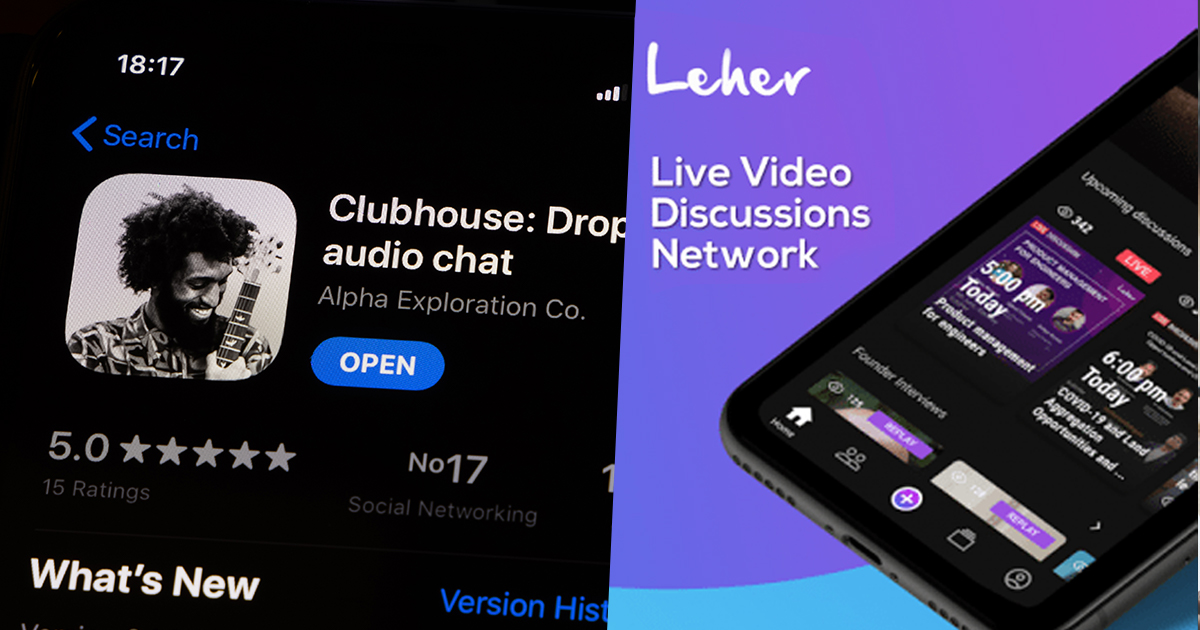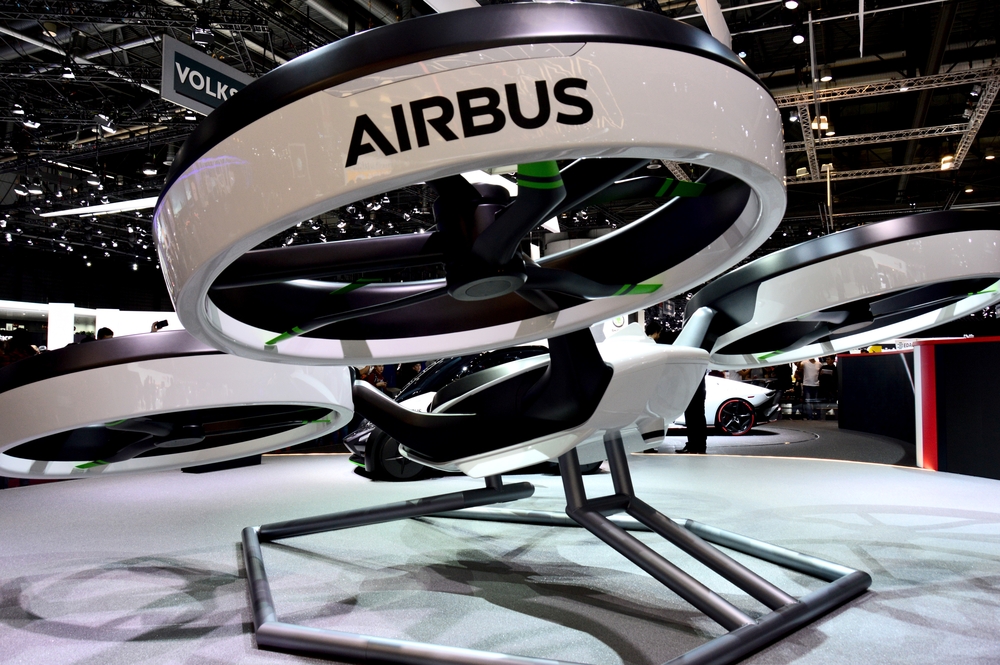Technology
Lofty Dreams: How The Flying Taxi May Finally Realize Our Desire for the Flying Car
Published
5 years agoon

If you thought that the future of transportation was just electric cars and autonomous vehicles, well, there’s a push to take things a little higher.
Certainly, gasoline-free, self-driving cars are all the rage right now, and rightfully so. We are deep into the testing phase of cars that reach level four automation (level five means they are fully autonomous).
However, other transportation technologies are aiming to leave the road behind and take occupants above the fray of cars and traffic, delivering them to their destinations through the air versus across the ground.
While the promise of the flying car introduced in Back to the Future Part II may have missed the mark by a few years, the next decade will see a revolution unlike any since humans first took flight.
What is a Flying Taxi?
Traditionally, the term flying taxi is often confused with established transportation services known as Air Taxis. The latter evokes smallish airplanes or helicopters that shuttle occupants short distances, city to city, usually from one airport to another.
The modern iteration on a flying taxi, however, takes the terminology of a short-haul flight to a whole new level.
What makes the flying taxi concept both unique and potentially viable in a modern setting is the ability for the aircraft to take off and land anywhere – no airport is necessary.
Thanks to vertical ascent and descent capabilities the aircraft currently being tested are more akin to helicopters, but the design isn’t merely limited to well-known methods of flight. In fact, some prototypes now resemble oversized drones and gondola cabs with an array of small rotors attached to the roof.
Many of the designs carry only a handful of riders – from as few as two up to between five and seven, not including the pilot for the non-autonomous concepts. Indeed crewless flight is still one to two decades away, but much like the driverless automobile the drive for flying taxis to one day be pilotless is an aggressive one.
The small size though is the key to the technology proving a significant addition to an already crowded transportation network. So too is the plan for many of these crafts to be electric, eliminating the noise and nuisance of a gas powered engine.
In rising above gridlocked avenues and streets, flying taxis would utilize every aspect of the urban setting. From the ground level (in some areas) to the airspace in between or just above a cities mid and high rise buildings to the rooftops of those same structures, the tech would undoubtedly make the most of its operational field. Most proposals call for those rooftops to transition into launch and landing pads for the taxi network.
An actual airborne taxi service to get occupants from point A to point B within a densely packed city won’t just stop at the city limits though. There are also plans that would expand that reach, flying short haul, low occupant flights between closely networked cities.
Places within an hour’s drive of each other such as Dallas to Fort Worth or Baltimore to Washington DC are obvious candidates. However, taxi flights also offer the opportunity to bridge locales like Boston and New York or Los Angeles and San Francisco.
More Than Just Flying Cars
While on paper the whole enterprise seems ridiculously cool and simple enough, the reality is something different.
Uber, the peer to peer ridesharing behemoth, is one of the most visible players in the race to get the flying taxi up and running with its Elevate and UberAir programs.
In partnership with space agency NASA, Uber is working towards their taxis taking flight in 2020 in Dallas-Fort Worth, Los Angeles, and Dubai. It’s an aggressive goal considering that Uber remains in the design phase and have yet to produce an actual working, to scale prototype.
But they are undeterred.
Jeff Holden, head of product at Uber, has said, “there’s been a great deal of progress that’s been hard to see from the outside because a lot of this is just hard work at the drafting table.”
He goes on the to note, “we feel really good. It’s been a really interesting process getting our vehicle manufacturing partners aligned on performance specifications so that they’re building vehicles that align with what we need to make Elevate successful. So lots of good progress there.”
Expanding upon the ideas of their uncrewed traffic management protocols or UTM, NASA helps to nail down the infrastructure side of the endeavor.
The UTM system is currently helping to corral the unruly nature of the growing drone industry. In theory, NASA’s UTM would lead to the creation of an entirely new system of air traffic control to guide the taxi flights.
Although the push for localized flying transports has yet to generate the same publicity as that of their earthbound automobile counterparts, Uber is far from the only player in the field. More than 15 different companies are working towards similar goals, and in many cases, a lot of investment dollars are flowing into these efforts to get them off the ground.
For example, Kitty Hawk is a startup owned and fully funded by Larry Page, co-founder of Google. Kitty Hawk is currently testing a recreational hovercraft in New Zealand meant to dovetail into their flying taxi program over the next three years.
Others companies wanting to get in on the action include aviation heavyweights Boeing and Airbus.
Boeing bought Aurora Flight Service Corporation late last year to give both their commercial and military programs in electric and autonomous flight a shot in the arm. Greg Hyslop, the Chief Technology Office for Boeing noted the deal reflects that the “the aerospace industry is going to be changing” and Boeing is aiming to be ready “for whatever that future may be.”
For their part, Airbus made a similar deal, with an investment in startup Blade, which already boasts a charter flight business that is, ironically enough, often cast as the Uber of charters. This in addition to Airbus’ in-house Vahana program.
Elsewhere, showing off at CES 2018 in Las Vegas, was an 18 rotor vehicle called the Volocopter, that until recently was flying around in the futuristic desert playground of Dubai, running test flights.
Straight out of a sci-fi movie, the Volocopter is a German designed pilotless drone that one must really see to believe and appreciate.
Dubai also has a partnership with Chinese firm EHang, whose own ambitions for flying taxis stems from the automation and delivery via drone aircraft of organ transplant materials.
Even part and component manufacturers are playing a pivotal role in making the sci-fi of flying vehicles real.
British engine maker Rolls-Royce has a propulsion system in development for use in flying taxis. They hope to have it available sometime within the next decade.
And yes, some auto manufacturers are getting into the game with Porsche in the early stages of exploring the possibility.
Just How Viable Is A Flying Vehicle?
As with any new technology, growing pains exist. Flying cars are no different. There will almost certainly be a level of turbulence before the population fully embraces the latest tech and its scalable for the masses.
Consider the now ubiquitous iPhone is less than 12 years old and was once a curiosity. The prevalence and the advancements of the device made in just over a decade are definitely remarkable. The hope is that a flying taxi can follow a similar fast-track path to success.
Of course, airborne taxis are a completely different realm. As much as humanity is yearning to see a car fly – and practically – it’s another thing when you ask those same people to take a ride. It will require a convincing sales pitch for commuters to trust a machine that has onboard parachutes as part of its standard equipment.
However, with cities more crowded and street-level gridlock a constant complaint of urban dwellers, it’s not difficult to envision city skies filled with swarms of on-demand taxis.
The CEO of Volocopter, Florian Reuter summarizes the ease of use autonomous flight offers. “Implementation would see you using your smartphone, having an app, and ordering a volocopter to the next voloport near you. The volocopter would come and autonomously pick you up and take you to your destination,” he said.
Discounting that level of simplicity and convenience is hard.
As cool as it all sounds, flying taxis – even with actual testing happening as we speak – remain a construct of the future. We noted that many of the target dates for these aerial taxi programs run between 2020 and 2030. For some, those timelines are highly ambitious.
Even those whose entire reputation derives from their lofty ambitions.
Elon Musk mused to Bloomberg during a recent interview his thoughts on flying cars, and it was less than favorable. “Obviously, I like flying things. But it’s difficult to imagine the flying car becoming a scalable solution,” he said.
Uber’s Holden, however, disagrees. “We’ve studied this carefully and we believe it is scalable,” he noted, also casting Musk’s comments as “off the cuff” and “random.”
Final Thoughts
Regardless of if it can actually happen anytime within the next few years, many are banking on it simply being a matter of time before we are living with the daily sight of flying taxi services buzzing over our heads.
While the initial product may prove a bit different from the original vision, few will argue should one of the longest held fantasies of future progress finally come true.
Written by – Anna Kučírková
You may like
Emerging Startup Stories
Suki: This Startup Wants To Transform Healthcare With Its Artificial Intelligence Tool
Published
3 years agoon
March 9, 2021
We live in a rapidly transforming era where humanity is making exponential leaps in technology. Thirty years ago, no one would have believed you could talk to an online voice assistant to create tasks and get things done. Ten years ago, no one would have believed humanity would land robots on Mars. Technology truly has improved the quality of living of every human who owns a smartphone and has access to an internet connection. Voice assistants are slowly replacing manual tasks and making lives easier and efficient. Siri, Alexa, Google Voice Assistant are just some of the widely used artificial intelligence based tools which are employed on a daily basis. Artificial intelligence, which is hailed as the technology of the future is now slowly making its way into much more complex domains like self driving vehicles, quantum computing and also health care.
Suki, a United States of America based startup founded by Punit Soni, developed their own voice assistant which runs on artificial intelligence to simplify healthcare for doctors and other healthcare professionals. In simple terms, Suki is akin to Siri for doctors. While you could order a pizza or schedule an appointment on Siri, doctors could modify, edit and add health records of their patients. Suki is a powerful tool to help doctors with documentation of health records which often take hours of their (doctors) time.
Suki currently focuses on documentation but has the potential to expand its usage to data queries, ordering, prescribing and billing. According to a white paper published by Suki, using its technology increases the time a doctor spends with a patient by 12% by cutting note taking time by 76%. The time which is saved also brings in a financial benefit of $30,000 more in revenue a year on average for doctors.
Suki raised a $ 20 million Series B round from Flare Capital Partners, First Round Capital, and Venrock, doubling its total funding to $ 40 million since its 2017 launch. Suki is also looking to expand its reach in India and has decided to establish Bangalore as their base of operations. India holds a lot of potential for Suki considering the amount of manual work which goes into almost any sector.
It would be interesting to watch how Suki and other similar AI based startups would transform healthcare across the world.
Latest News
Leher Versus Clubhouse: Which Audio Listening Startup Would You Choose?
Published
3 years agoon
March 2, 2021
Clubhouse is a new type of social networking platform which is an audio only platform. This means every conversation takes place through audio where users speak to let their thoughts known. Users can create and host rooms where speakers will talk about a particular topic. Originating in the Silicon Valley, Clubhouse attracted some major names onto its platform like Elon Musk, Evan Williams, Reddit co founder Alexis Ohanian, former Y Combinator President Sam Altman, AngelList co founder Naval Ravikant, Ashton Kuthcer, Oprah Winfrey, Drake, Kevin Hart and many others are some of the influential personalities who are on Clubhouse. There is however a catch as Clubhouse is currently limited to iOS.
Leher is an Indian made alternative to Clubhouse and is a similar audio sharing and listening startup. Leher also has video support unlike Clubhouse and is also available for both Android and iOS. However, Leher does not have the biggest names in the world on its platform but it does have significant micro influencers and is growing at a rapid pace. Within 180 days of its beta version launch, the company claimed to have its users spend about 44 minutes every day and 250,000 minutes per month for live video sessions.
We at Startup Stories are curious to see which among Leher or Clubhouse would our readers choose to take part in a virtual discussion. Please let us know your answer in the poll below.
Technology
4 Useful And New WhatsApp Features That Released During The COVID-19 Lockdown
Published
4 years agoon
May 15, 2020
WhatsApp is one of the worlds largest online texting applications which is used almost in every country. It is a light and easy to use texting application which also offers a lot of other important utilities other than texting. These include video calling, group video calling, digital payments, document and media sharing and location sharing. What began as a simple texting application is now an indispensable part of our lives because WhatsApp has made information flow faster and safer. WhatsApp kept scaling new heights time and again and this was possible only because of the constant innovation by the developer team.
In light of the COVID-19 pandemic which forced entire countries to go into lockdown and shut down businesses, WhatsApp is doing its part to help people during these times by rolling out some nifty and important features.
Group video call limit increased
WhatsApp had the facility for group video calls which could only accommodate 4 people in a single call. However, with a new update WhatsApp increased the limit of group video calls to 8 users. The update is not just limited to increase in participants but also to the audio and video quality. There has been a noticeable increase in the quality of the video and audio in group video calls.
‘Together At Home’ sticker pack
WhatsApp has launched a new sticker pack called ‘Together at Home’ in collaboration with the World Health Organisation (WHO.) The sticker pack aims to help people stay connected throughout the COVID-19 pandemic.
Restrictions on frequently forwarded messages
This is probably one of the most important features to be released during the COVID-19 lockdown. In a country like India, a lot of misinformation is shared on a daily basis on WhatsApp messages and most of these messages are forwards. The amount of misinformation on WhatsApp is so high that WhatsApp is often referred to as ‘Whatsapp University.’ During the coronavirus pandemic, WhatsApp restricted ‘frequently forwarded messages’ to be sent to not more than one chat at a time.
Chatbots
WhatsApp has launched chatbots by partnering with WHO and the Indian government and launched a chatbot to provide authentic information related to the COVID-19 virus. The chatbot developed by the Indian government is known as MyGov Corona Help Desk and can be accessed by adding +91-9013-151515 to your contacts and sending a message.
Sharing correct information, avoiding incorrect panic.
Here is an effort by WhatsApp and @mygovindia to ensure you receive accurate and verified information on Coronavirus.
Please click on this link https://t.co/REabfIp5QT or send Hi on +919013151515. #IndiaFightsCorona pic.twitter.com/0maqUE3PvG
— Narendra Modi (@narendramodi) March 21, 2020
ALSO READ : Zoom Video Conferencing App Downloads Dethrone Whatsapp And TikTok In India
We believe that these features are definitely the need of the hour and will go a long way in creating a positive impact. Let us know if you used any of these features on your mobile device!
Recent Posts
- Discover Kheyti, The Startup Changing The Lives of Farmers In India
- Suki: This Startup Wants To Transform Healthcare With Its Artificial Intelligence Tool
- 5 Successful Indian Startups Founded By Women
- Leher Versus Clubhouse: Which Audio Listening Startup Would You Choose?
- Why Are Ads On Digital Media Failing To Reach The Right Audience?
- Facebook Launches BARS For Creating Raps To Counter TikTok’s Growing Popularity
- How Domino’s Pizza Grew 13000% From 2008 To 2020
- Elon Musk Tweets About Bitcoin Bull Run And Loses $ 15 Billion
- Daily Basket Creates BBisabully Over Being Sued By Big Basket Over Usage Of Basket
- Bike Rental Startup Bounce Goes For A Second Round Of Layoffs Amidst Operations Scale Down
- How Parle G Became An Iconic and Well Loved Indian Brand
- Adidas To Sell Reebok Brand Due To Declining Sales
- Carl Pei’s Nothing Invites Retail Investors
- The Incredible Journey Of Wolfe Herd And The Dating App Bumble Which Went Public
- Alphabet Invests In Carl Pei’s Startup Nothing
- Bitcoin Soars As Tesla Purchases 1.5 Billion Dollars Worth Of Cryptocurrency
- From Unicorn To Bankruptcy; Knotel Bears The Brunt Of COVID-19 Pandemic
- The Journey Of Wine Recommendation App Vivino Which Raised 155 Million Dollars In Funding
- How Does Investment Startup Robinhood Make Money?
- The Story of Mens Grooming Startup Bombay Shaving Company












